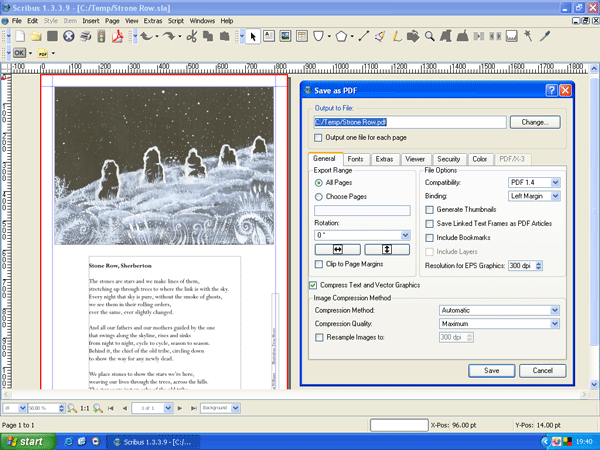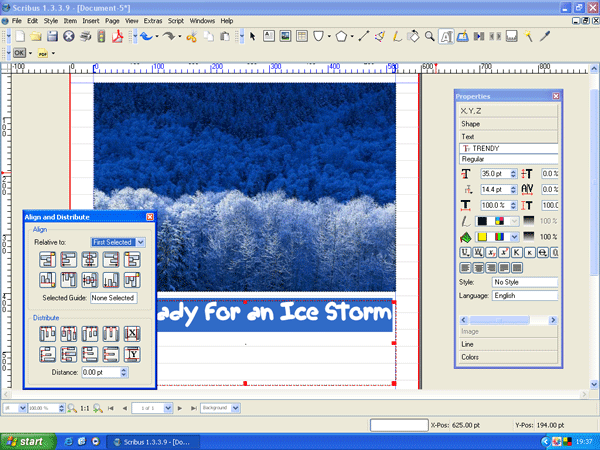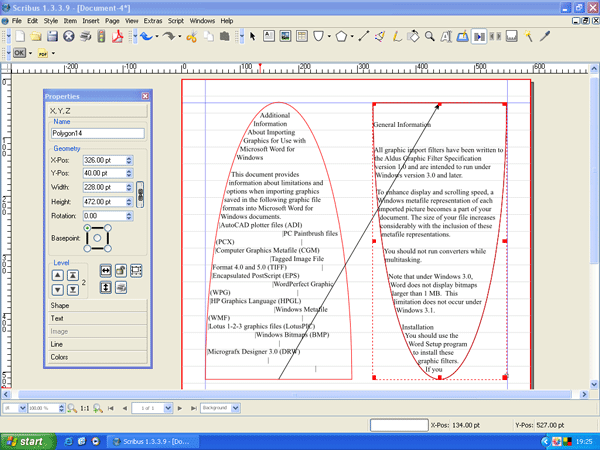Scribus: Open Source Desktop Publishing Review
Scribus: Open Source Desktop Publishing
Is there any need to dig deep for a DTP application? Simon Williams gives the open-source Scribus a try.

Verdict
To read most of the digital press, you’d think InDesign was the only big-league desktop publishing (DTP) application anyone took seriously. A few might add QuarkXpress to that, though Quark seems to have alienated virtually all journos over the years. This stems from a long-running reluctance to provide review copies and a long-running desire to produce an under-featured, over-priced heavyweight that still has trouble with tables. There is a third contender, though, from a rather unusual source.

Scribus is an open-source DTP application, started in 2001 and written by people who are clearly opinionated on subjects like typography and page design. The program is a free download and is cross-platform, with versions available for Windows Vista/XP/2000, Mac OS X, OS/2 and Linux. It has just moved to version 1.3.4 but since this developers’ release is only currently available as source code, our review is based on version 1.3.3.9. On Windows you’re advised to install GhostScript, the open source PostScript and PDF rendering engine, first. Both installations are painless and Scribus runs up to a rather atypical blank page display.

On this page, there’s no toolbox down the left-hand side like InDesign, no palette bar down the right like CorelDraw and no formatting toolbar at the top, like Publisher. Coming to Scribus for the first time, you’d be forgiven for thinking it has no attribute control at all, other than its menus. In fact, there are all kinds of property and other floating panels of controls, that are switched on from the Windows menu. So why not switch one on by default, so we know they’re there?
In fact, the design of the UI lends itself well to DTP, as the clutter of many commercial programs is removed, leaving more of the current page on view. By pulling up just the panels you need for the layout elements you’re working on, you get quick access to your document all the time.

There’s little on the Scribus web site or in the the documentation to highlight the features of the program, and much of the text is like being lectured to by JR Hartley. Advice like ‘I need not explain the benefits of saving plain, unformatted text… save plain text, you will be happy about this some day’ Yes, particularly if your DTP imports a limited number of word processor formats. The best source of guidance to the program is the Scribus Wiki at http://wiki.scribus.net/index.php/Main_Page.
Here are some key things Scribus can do:
• Create single or multi-page documents with text, photos and vector graphics, imported from a good range of mainstream applications.
• Handle CMYK and spot colours and include ICC profiles.
• Manipulate objects within document-wide layers.
• Create and edit frames, make them visible or hidden, rotate, scale them and add rounded corners.
• Directly create PostScript and PDF files from documents and perform pre-flight checks to make sure there are no formatting nasties to mess up your trip to the printer.
There are several unusual extras in the program, which help speed page layout. The drawing tools are unusually versatile for a DTP, with predefined shapes, a regular polygon tool, and bezier curves. There’s comprehensive node editing and you can attach text to a path for visual effects. You can also flow text inside a shaped frame and link frames to flow text through multi-page documents.
Scribus has good rotation capabilities on all objects and with rotated text, you can use the up and down cursor keys to move it clockwise and anti-clockwise, a degree at a time.

Text can be entered directly on the page, but there’s also a separate text editor, so you can make quick and dirty changes to imported copy, while putting together Scribus pages. Scribus doesn’t use modeless editing in the MS Publisher sense, as you still have to create frames for text and graphics before pasting their contents, but a text frame can be double-clicked to activate the text cursor within it.
Scribus offers table creation, but only in the sense of creating a series of grouped frames. It’s still up to you to select the cells you want, before making content or layout changes.
One of the delights of the program is the ease with which you can produce PostScript and PDF. A simple one-click button calls up the export dialogue and you can even choose PDF/X3, the ISO standard for the format: Scribus was justifiably proud of being the first application to support this. The program can import PDFs too, though it can’t edit their contents directly.
”’Verdict”’
Scribus is a robust, well-featured DTP program, ideal for shorter documents. It offers a lot, with an improved preview mode and better style handling from a dedicated style palette. There are two provisos: make sure you have good fonts installed and spend a little time looking into the corners of the program. It may not be quite as smooth as InDesign, but most of the important tools are in place… and without flexing your plastic.
Trusted Score
Score in detail
-
Features 8
-
Value 10
-
Usability 8

